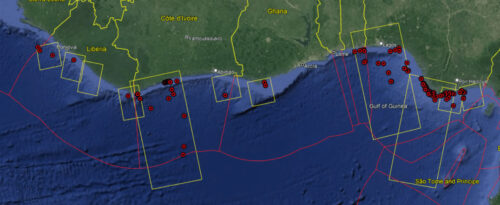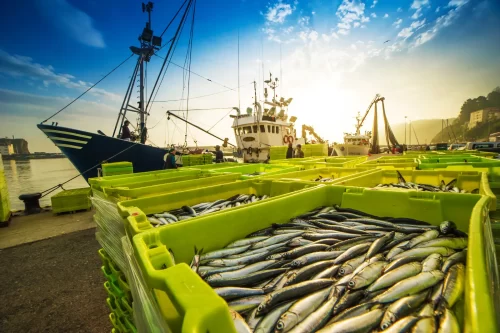Annual international collaboration Operation North Pacific Guard targets illegal, unreported and unregulated fishing

For three years, Global Fishing Watch has worked with the United States Coast Guard (USCG), Canada’s Department of Fisheries and Oceans (DFO), and their partners in addressing illegal, unreported and unregulated (IUU) fishing in the North Pacific as part of Operation North Pacific Guard (NPG). This year’s 105-day high seas patrol discovered the highest number of violations per boarding in the operation’s history, and uncovered serious violations of conservation and management measures (CMM) under the North Pacific Fisheries Commission (NPFC), a regional fisheries management organization governing harvest practices in the patrol area.
The operation discovered multiple IUU indicators, including failure to maintain proper catch records, use of prohibited gear, undocumented retention of bycatch, and shark finning, which is a violation of Western and Central Pacific Fisheries Commission measures.
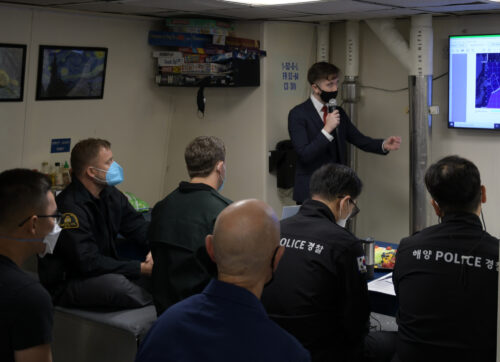
Global Fishing Watch fisheries analyst Gunther Errhalt assisted the U.S Coast Guard Cutter Bertholf by providing analysis on patrol area threats and the movements and behavior of vessels and fleets. The insights enabled joint boarding teams to develop specific evidence to investigate for each vessel boarded, based on its particular track, interaction, or suspicious or dark activity periods—laying the groundwork for high quality and effective boardings and inspections in support of the RFMO.
This year’s patrol covered 27,000 miles and comprised personnel from the United States, Canada, the Republic of Korea and Japan. Bertholf’s multinational boarding teams, translators and intelligence staff met with Errhalt at the beginning and middle of the patrol to hear his briefing on trends within the patrol area and the surrounding waters. Based on Errhalt’s analysis of Global Fishing Watch’s data, the patrol was able to effectively cover thousands of square miles and accurately predict where the fishing fleets would move. Global Fishing Watch also provided on-demand assessments of fleet concentrations to support near-real time targeting. With individualized targeting, Bertholf’s intelligence and operations team sorted through hundreds of possible vessels to ensure each boarding covered multiple threats.
Detective work at sea
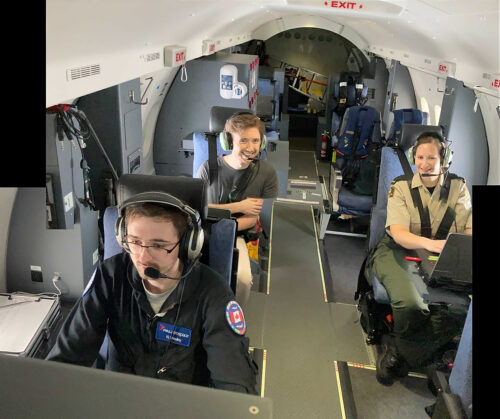
Over the past several years, the detection of vessels that have been engaged in the illicit harvest of salmon has led to the development of new strategies to combat this activity. With salmon stocks in Canada and the U.S. on the decline, a hypothesis was formed that salmon are migrating farther south and entering the NPFC convention area, perhaps due to global warming or other factors. While in the NPFC area, vessels may be catching them and not reporting the catch. This is especially important as the North Pacific Anadromous Fisheries Commission (NPAFC) RFMO convention area overlaps with the NPFC RFMO, where it has a mission of prohibiting fishing for or retention of anadromous species, including Pacific salmon and steelhead, and reducing incidental catch. Global Fishing Watch has continued to investigate vessel activity and fleet trends in these two RFMOs. Most recently, the organization has supported the analysis of both intentional and incidental take of salmon in the NPFC Convention Area and has produced a comprehensive report that identifies the potential risk to these stocks. The information gathered during the analysis was used as one subset of intelligence for targeting in the 2021 NPG patrol, with the hopes of developing a better understanding of risks toward salmon.
By considering the vessels with links to fish processors and tapping open source intelligence and information shared between collaborators, Global Fishing Watch produced a fisheries patrol support document that detailed historical trends in activities within the patrol area during the period the patrol would take place. Select areas and vessels were pointed out as top targets for fisheries enforcement. Within each area of interest, enforcers specified a list of the top 10 vessels to be the focus of their efforts. The success of this method has led Global Fishing Watch to start the development of a tool that will allow fisheries patrol planners around the world to access data for free and create their patrols based on their own desired outcomes.
Global Fishing Watch prepared near-daily reports of vessels of interest within the planned route of the cutter, sharing details of activities of interest, owners of interest, and other intelligence to help the USCG team at sea determine priority vessels. Thanks to the hard work of the Bertholf crew, violations were found almost immediately upon boardings. Global Fishing Watch also met with the air crew and aerospace pilots deployed in support of Bertholf from Hokkaido, Japan. This was to support their work to conduct real-time fisheries targeting using Global Fishing Watch data from the skies above the squid jigging fleet operating in the North Pacific.
Data for success
The collaboration led to a very successful patrol, enhanced by new intelligence capabilities and improved intelligence sharing between USCG Pacific Area, USCG District 17, the DFO and Global Fishing Watch. In total, 29 vessels were investigated, with 68 percent having some violation or engaging in a way that requires further investigation in future patrols. Global Fishing Watch recommended 93 vessels for further investigation. Of these, 77 percent had at least one past violation, most of them serious. As Global Fishing Watch analyzed the fishing business interactions for the fleet operating around the Russian Far East and Japan, one of the most significant outcomes of the patrol was that a vessel identified during the fleet interaction analysis was boarded, and investigations led to two other vessels owned by the same company. During the boardings, prohibited species were discovered in inspections of fish holds matched to vessel logs.
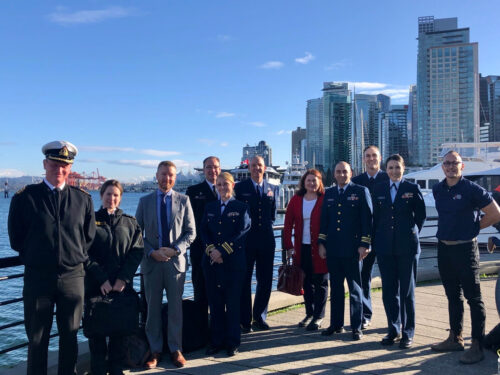
The patrol also helped improve Global Fishing Watch’s forced labor model algorithm updates, and clarified needed updates to conservation and management measures as well as fishery boarding checklist items regarding potential human rights abuses and human trafficking on distant water fishing vessels and their transshipment support vessels.
To close out the 2021 patrol, the Coast Guard and Canada’s DFO and Department of National Defence gathered in Vancouver, Canada, in December to hold their annual fisheries enforcement meeting, where Global Fishing Watch delivered an executive summary on its work with the patrol and explored ways to build on the collaboration for 2022.
Global Fishing Watch looks forward to continuing its assistance with Operation North Pacific Guard and other joint international fisheries enforcement operations around the world to combat IUU fishing.
Vincent Nguyen is the government services liaison officer at Global Fishing Watch; Gunther Errhalt is a fisheries analyst at Global Fishing Watch; LCDR John Mansolillo is the operations officer aboard the USCG Bertholf; Captain Tim Brown is the commanding officer aboard the USCG Bertholf; LCDR John Suckow is the international fisheries officer for USCG District 17; Sean Wheeler is the chief of international programs for the Department of Fisheries and Oceans Canada; Patricia DeMille is a senior compliance program officer with the international program for Department of Fisheries and Oceans Canada.

